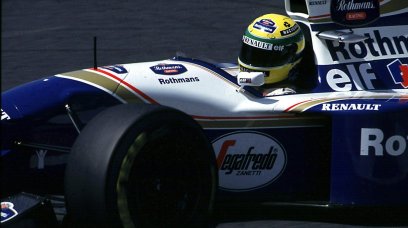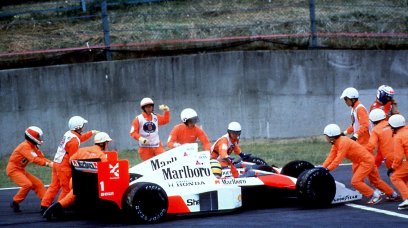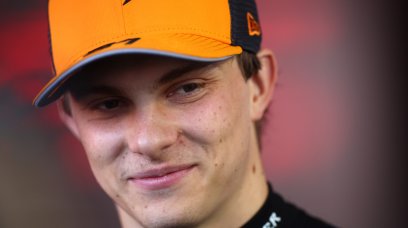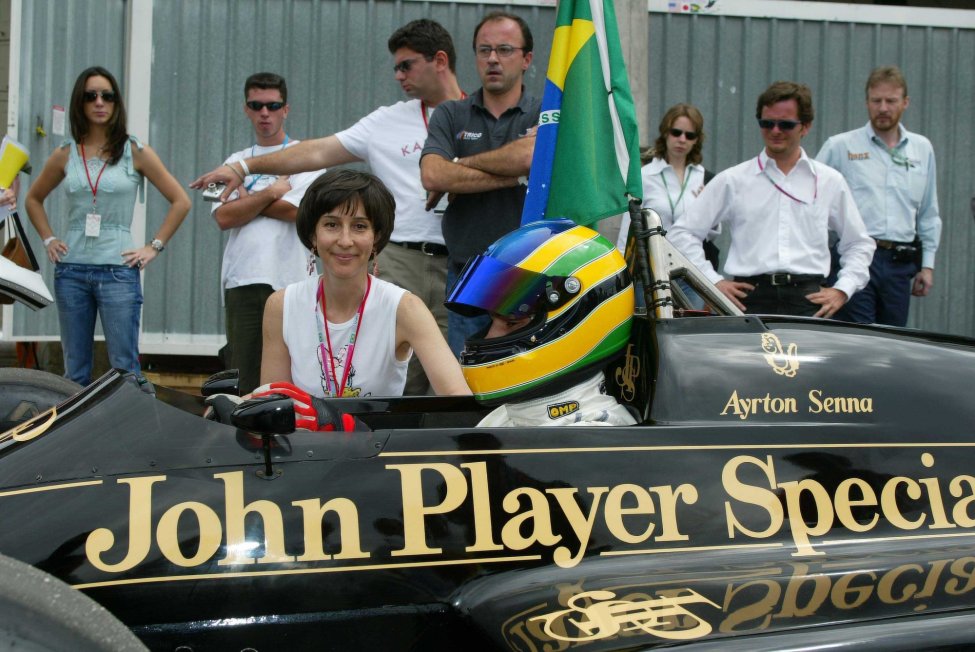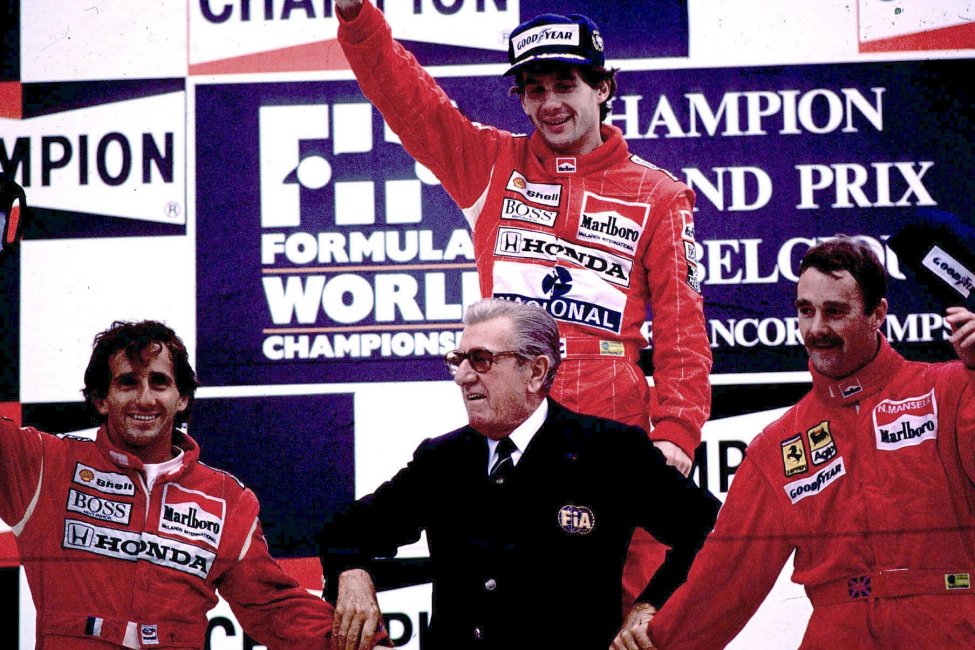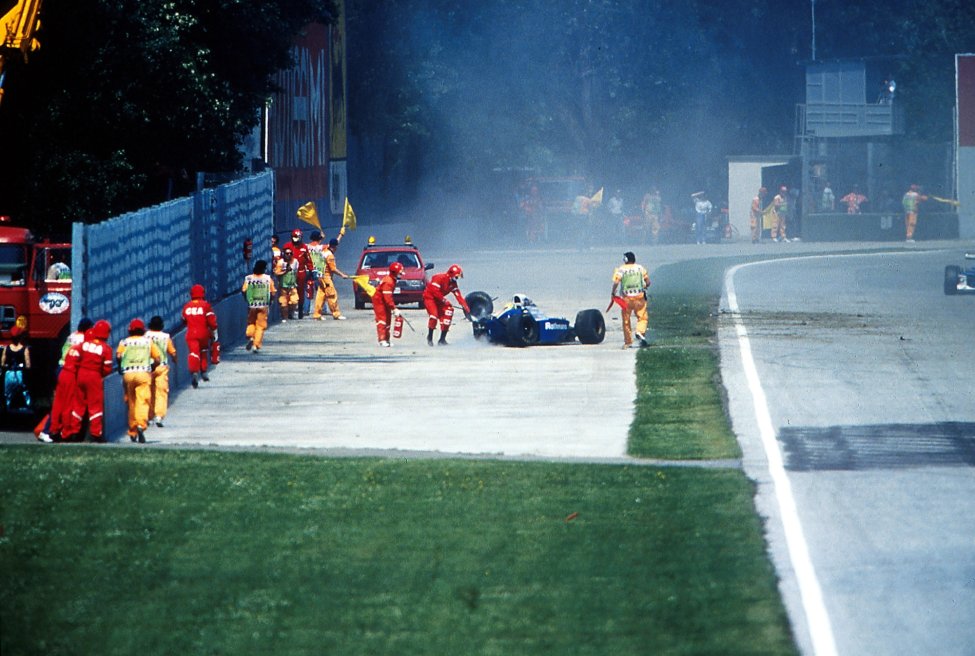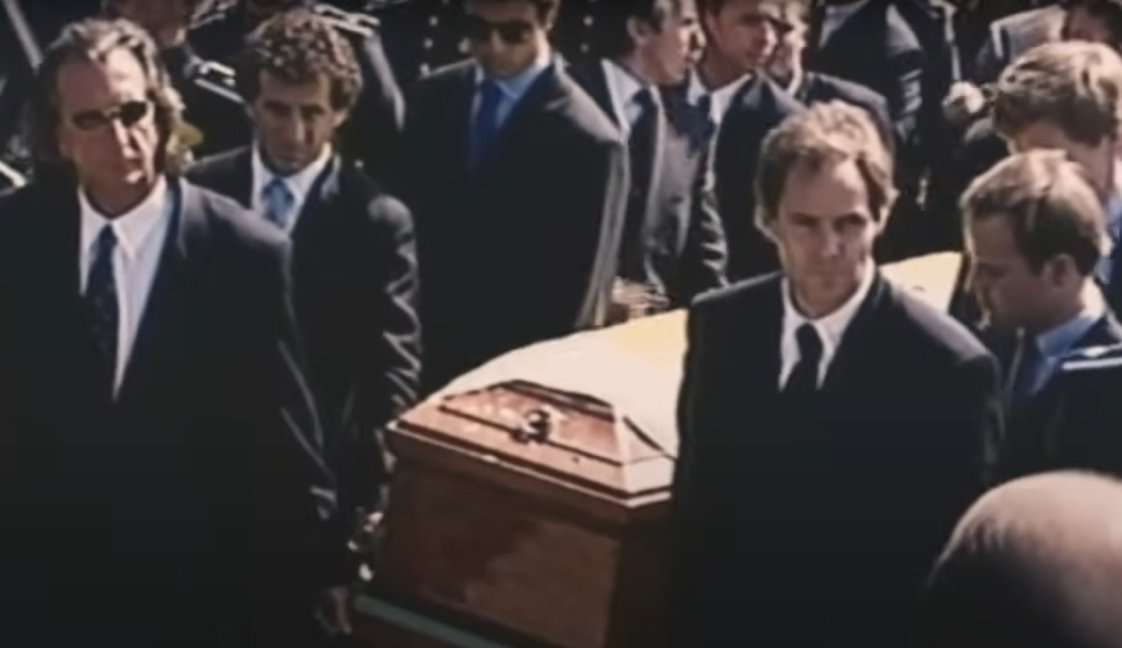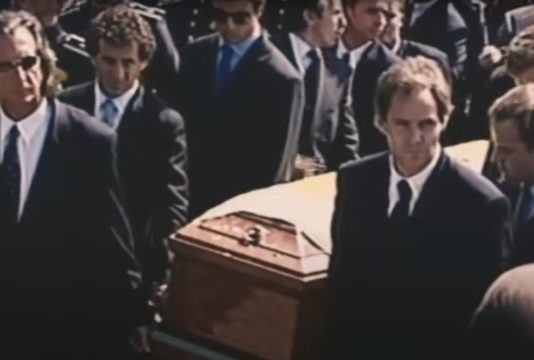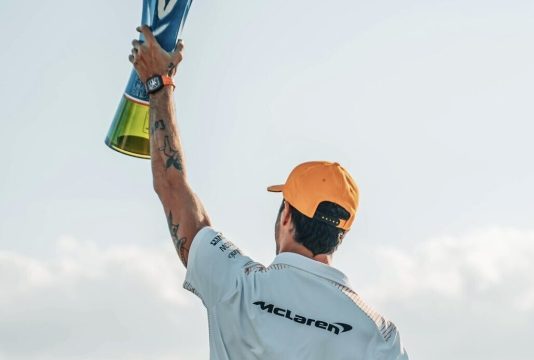Ayrton Senna
Although his passing came over 25 years ago, Ayrton Senna is still viewed as one of the greatest drivers to ever take the Formula 1 grid. The Brazilian won three world championships during the course of his career while earning the reputation as one of the finest drivers in the rain. His tragic death at the 1994 San Marino forever changed the sport.
F1 career
| World titles | 3 |
| WC points | 614 |
| Races | 161 |
| Victories | 41 |
| Podium places | 80 |
| Pole positions | 65 |
Biography of Formula 1 legend Ayrton Senna
Ayrton Senna da Silva was born on March 21, 1960 in Sao Paulo. The middle child of a wealthy Brazilian family, he was born to land and factory owner Milton da Silva and wife Neide Senna da Silva. Ayrton had an older sister Viviane and a younger brother Leonardo.
Highly athletic and excelling in gymnastics, along with other sports, Senna developed an interest in cars and motor racing at the age of four. His first cart was built by his father using a small 1-HP lawnmower engine. From there he started racing, entering a karting competition at Interlagos at the age of 13. Despite racing against rivals who were older than him, Senna started his first race on pole and led for much of the event before retiring after colliding with a rival.
Senna won the South American Kart Championship in 1977 and took part in the Karting World Championship from 1978 to 1982, finishing runner-up in 1979 and 1980.
In 1981, Senna moved to Eatno near Norwich to begin his single-seater career. He enjoyed immediate success, winning the RAC and Townsend-Thoreson Formula Ford 1600 Championships that year with the Van Diemen team.
Despite the success, Senna didn't think he would continue in motorsport as his parents wanted him to return home and take over the family business. As a result he retired from Formula Ford and returned to Brazil, however before leaving he was offered a driver with a Formula Ford 2000 team for £10,000.
After thinking it over Senna returned to England and went on to win the 1982 British and European Formula Ford 2000 Championships. Driving for the West Surrey Racing team in the 1983 British Formula Three Championship, Senna dominated the first half of the season though Martin Brundle eventually clawed back into the race. Nevertheless Senna won the title at the final round before winning the inaugural Macau Formula 3 Grand Prix.
Ayrton Senna's first Formula 1 season in 1984
Senna tested for Williams, McLaren, Brabham and Toleman in 1983, while Peter Warr of Lotus, Ron Dennis of McLaren and Bernie Ecclestone of Brabham made offers for testing and long-term contracts in 1984.
During the Brazilian's test for Williams at Donington Park, he was quick than other drivers including reigning World Champion Keke Rosberg. Lotus were keen to replace Nigel Mansell with Senna, however the teams title sponsor Imperial Tobacco wanted a British driver in the fold. A similar scenario played out at Brabham, as sponsor Parmalat wanted an Italian driver with the second car eventually shared by brothers Two and Corrado Fabi.
As a result Senna signed for Toleman, who joined F1 in 1981, and used the less competitive Pirelli tyres with Johnny Cecotto as his teammate.
Senna made his debut at the Brazilian GP but retired early after his turbocharger failed. He scored his first points after finishing sixth at the second race of the season in South Africa, and replicated that two weeks later in Belgium. He failed to qualify for the San Marino GP due to tyre issues and a fuel-pressure problem - the only time this happened in his career.
His best result of the season came at the wet Monaco GP despite qualifying down in 13th. Senna made his way through the field and was beginning to catch race leader Alain Prost. However the race was stopped on Lap 31 as the rain intensified, with Senna catching the Frenchman by about four seconds per lap. He finished on the podium two more times that year, third at the British and Portuguese GP and finished ninth in the standings despite missing the Italian GP after being suspended by Toleman.
The team deemed that Senna had breached his contract after holding talks with Lotus for 1985 without informing them first.
Ayrton Senna at Lotus
Senna joined Lotus for the 1985 season, becoming the first driver not personally chosen by team founder Colin Chapman who had passed away in 1982.
Partnered by Elio de Angelis, the Brazilian dominated during testing in Brazil. While the car was quick, reliability issues and mistakes related to Senna's inexperience slowed down the team's efforts. Nevertheless Senna took his first F1 pole at the second race of the season in Portugal. The race took place in very wet conditions, allowing the Brazilian to cruise to his first career victory in dominant fashion by beating Ferrari's Michele Alboreto by over a minute. In fact, he lapped everyone up to and including third-place finisher Patrick Tambay en route to his first Grand Slam.
Senna led in San Marino, Monaco, Britain and Germany but retired due to engine failure or running out of fuel, while he crashed out in France. He had to wait until the Austrian GP to score points again despite taking three more poles in between. Two more podiums in the Netherlands and Italy followed before taking his second career win in Belgium in wet-dry conditions.
The relationship between Senna and De Angelis deteriorated as the campaign went along as both drivers wanted top driver status at Lotus, with the Italian leaving for Brabham at the end of the season after spending six years with the team. While Senna and De Angelis finished the season fourth and fifth in the standings, the Brazilian registered seven pole positions - the most of any driver that year.
Johnny Dumfries replaced De Angelis, with Senna vetoing Derek Warwick as he felt Lotus should not have two top drivers. Senna had pushed for fellow Brazilian Mauricio Gugelmin to join him, however the team's sponsor John Player & Sons wanted a British driver in the ranks.
Senna started the season by finishing second in Brazil behind the Williams of countryman Nelson Piquet and then won the Spanish GP by 0.014s ahead of Mansell in one of F1's closest finishes. Poor reliability hampered the Brazilian in the second half of the season, but that didn't stop Senna from claiming eight poles, six more podiums and a victory at the Detroit GP to finish the season in fourth with 55 points.
Lotus brought in the same turbocharged Honda V6 engines in 1987 that helped Williams win the previous year's Constructors' Championship. Saturu Nakajima was brought in as Senna's teammate, with the Brazilian contractually guaranteed to get preferential treatment in the allocation of equipment. Senna finished second at the San Marino GP, however controversy erupted at the following race in Belgium. The Brazilian collided with Mansell, and the Briton grabbed Senna by the throat in the pit lane despite being restrained by Lotus mechanics.
Senna then took the lead in the Drivers' Championship following wins in Monaco and Detroit. However from there Williams once again began to assert their dominance, with it being announced at the Italian GP that Senna would be joining McLaren the following year. Senna ended the year with back-to-back send place finishes in Japan and Australia, though the latter was later stripped after Lotus were deemed to have brake ducts that were too wide. As a result the Brazilian ended the season with 57 points, eight podiums and one pole position.
Senna's move to McLaren and rivalry with Prost
Senna's career was boosted by his strong relationship with Honda during his final year with Lotus, and it paid off in 1988 as McLaren had secured Williams' supply of Honda's V6 turbo engines. Now driving alongside double-world champion Alain Prost, the two began a fierce rivalry that dominated F1 for the next five years.
After the pair split victories at the opening two races, Senna took pole for the Monaco GP by 1.4 seconds over Prost. The Brazilian looked set for certain victory on Sunday, leading most of the race, before crashing into the barriers on Lap 67. Things heated up between the two teammates in Portugal when Prost got off the line better than the Brazilian. Senna retained the lead, however the Frenchman made another passing attempt at the end of the opening lap. Senna swerved to block his teammate, who nearly ran into the pit wall at 290km/h.
Prost pulled away and took victory, however he was angered by Senna's maneuver, which resulted in a warning from the FIA. The pair finished the year with 15 wins from 16 races thanks to the dominance of the McLaren MP4/4. The only race won by a non-McLaren car came at the Italian GP when Senna, who was leading over Ferrari duo Gerhard Berger and Michele Alboreto, collided with the lapped Williams car of Jean-Louis Schlesser. Senna's car was beached and stalled, allowing Ferrari to take a famous one-two just weeks after the passing of team founder Enzo Ferrari.
In the end Senna took his first World Championship thanks to eight wins and 13 poles. Although Prost finished with more points, only the 11 best scores counted to the final standings, resulting in the Brazilian winning by three points.
The rivalry between the two intensified in 1989 starting with the San Marino GP. Senna overtook Prost at the restart, a move the Frenchman believed violated a pre-race agreement. The Brazilian rattled off wins in San Marino, Monaco and Mexico and later Germany, Belgium and Spain, however reliability woes in Phoenix, Canada, Britain and Italy along with collisions in Brazil and Portugal dented his championship hopes.
Nevertheless Senna headed to the penultimate race of the season in Japan with a chance at the title, though he needed a win to do so. The Brazilian started on pole but trailed Prost when on lap 46 he made a bold move to pass his teammate at the last chicane. The Frenchman turned right and tangled wheels with Senna, with both cars sliding to a standstill down the escape road. Prost abandoned his car however Senna asked marshals to push-start his car, as he rejoined the race and took victory.
However the controversy didn't end there as the Brazilian was disqualified following a stewards after the race for receiving a push start, cutting the chicane and crossing the pit lane entry. Senna also had his FIA Super License temporarily suspended in the winter, as he engaged in public criticism of then FIA-president Jean-Marie Balestre, who he believed was favouring countryman Prost.
As a result Senna finished the year second with six wins, with Prost opting to leave McLaren for Ferrari due to the toxic relationship between the two.
Prost rivalry continues
With Prost now at Ferrari, Senna stormed out to an early championship lead thanks to three wins from the opening five races. However Prost responded with three wins in a row in Mexico, France and Britain to close the gap. The Frenchman and teammate Mansell finished one-two in Spain while Senna retired with a damaged radiator to cut the gap to just nine points with just two races remaining.
Just like the previous year Senna and Prost headed to Japan with the championship hanging in the balance with the Brazilian starting from pole. Before qualifying the Brazilian has asked that pole position be moved to the clean side of the racetrack not he left, but that request was rejected by Balestre after the session. Prost pulled ahead of Senna off the line, and while the Brazilian tried to repass at the first corner, the two collided as the Frenchman turned in. The cars collided at 270km/h and went off track into the tyre barrier, making Senna the World Champion.
A year later Senna shed light on the incident, stating he had been assured by race officials that pole position would be moved to left only to have decision reversed by Balestre. As a result of what he felt was unfair decision-making, that included his 1989 disqualification, the Brazilian decided he would not yield the corner to Prost, resulting in the collision.
Senna couldn't be stopped in 1991 as he cruised to a his third World Championship thanks to seven wins from 16 races, along with increasing his pole tally to 60 from 127 events. Prost was hindered by Ferrari's downturn in performance, while Mansell and Williams responded midway through the season after some initial reliability woes.
After asking Honda to step up their engine development, Senna responded late in the season by taking three more wins and clinching the title in Japan when Mansell went off at the first corner. The Brazilian came home second, allowing teammate Gerhard Berger to pass him at the last corner as a thank-you for his support over the season.
Although Senna held talks with Williams regarding a move to the team in 1992, he remained at McLaren. Unfortunately he could do nothing to stop the Williams FW14B which featured active suspension and a Renault engine as Mansell won the first five races of the season.
By the end the Briton cruised to the title thanks to nine wins with teammate Riccardo Patrese and Michael Schumacher finishing second and third respectively. Senna managed to win three races but finished fourth in the standings, throwing his future at McLaren into doubt.
Ferrari made an offer for the Brazilian's services that was turned down as Senna considered a move to IndyCar and Williams. With defending champion Mansell joining the IndyCar Series for 1993 and Patrese joining Benetton alongside Schumacher, Senna went so far as to forfeit his salary to join the team. However with Prost joining the team after leaving F1 at the end of the 1991 season, the Frenchman used a veto clause in his deal that prevented the Brazilian from joining him at the team.
With Honda having left F1 due to economic issues, McLaren used a customer supply of Ford V8 engine as Senna agreed to remain with the team on a race-by-race basis, though he ended up staying for the entire season.
The Brazilian took victories in Brazil and Donington in changing conditions, with the latter considered by many as one his finest wins as he went from fifth to first on the opening lap, lapping everyone but second place in a race that some drivers needed seven pit stops. He also took a record-breaking sixth win in Monaco and led the championship from Prost after six races.
However from there Williams began to assert their dominance while Senna suffered mechanical issues in Imola, Canada, Britain, Hungary and Portugal, were Prost clinched his fourth title. The Brazilian took victory at the penultimate race of the season in Japan that saw Jordan rookie Eddie Irvine unlap himself twice. This resulted in Senna confronting the the Jordan driver in the pits and punching him in the head, which led to a two-race ban for the Brazilian that was eventually overturned. Senna ended the year by taking his 41st and final F1 victory in Australia in Prost's final race, which prompted the Brazilian, to the surprise of many, to invite his rival to the top step of the podium as a sign of peace between the two.
Ayrton Senna's move to Williams and San Marino GP tragedy
With Prost retired Senna was finally able to join Williams for the 1994 F1 season.
During the San Marino Grand Prix in 1994, Sennas's car left the racing line at 307km/h, hitting the retaining wall at 233km/h. The red flag was shown while Senna was removed from his Williams before being airlifted to Bologna's Maggiore Hospital.
Senna's passing was announced by the head of the hospital's emergency department, Maria Teresa Fiandri, while it was later revealed that a furled Austrian flag was found in his car as the Brazilian planned to honour Ratzenberger after the race.
Don't miss out on any of the Formula 1 action thanks to this handy 2026 F1 calendar that can be easily loaded into your smartphone or PC.
Download the calenderAyrton Senna news

